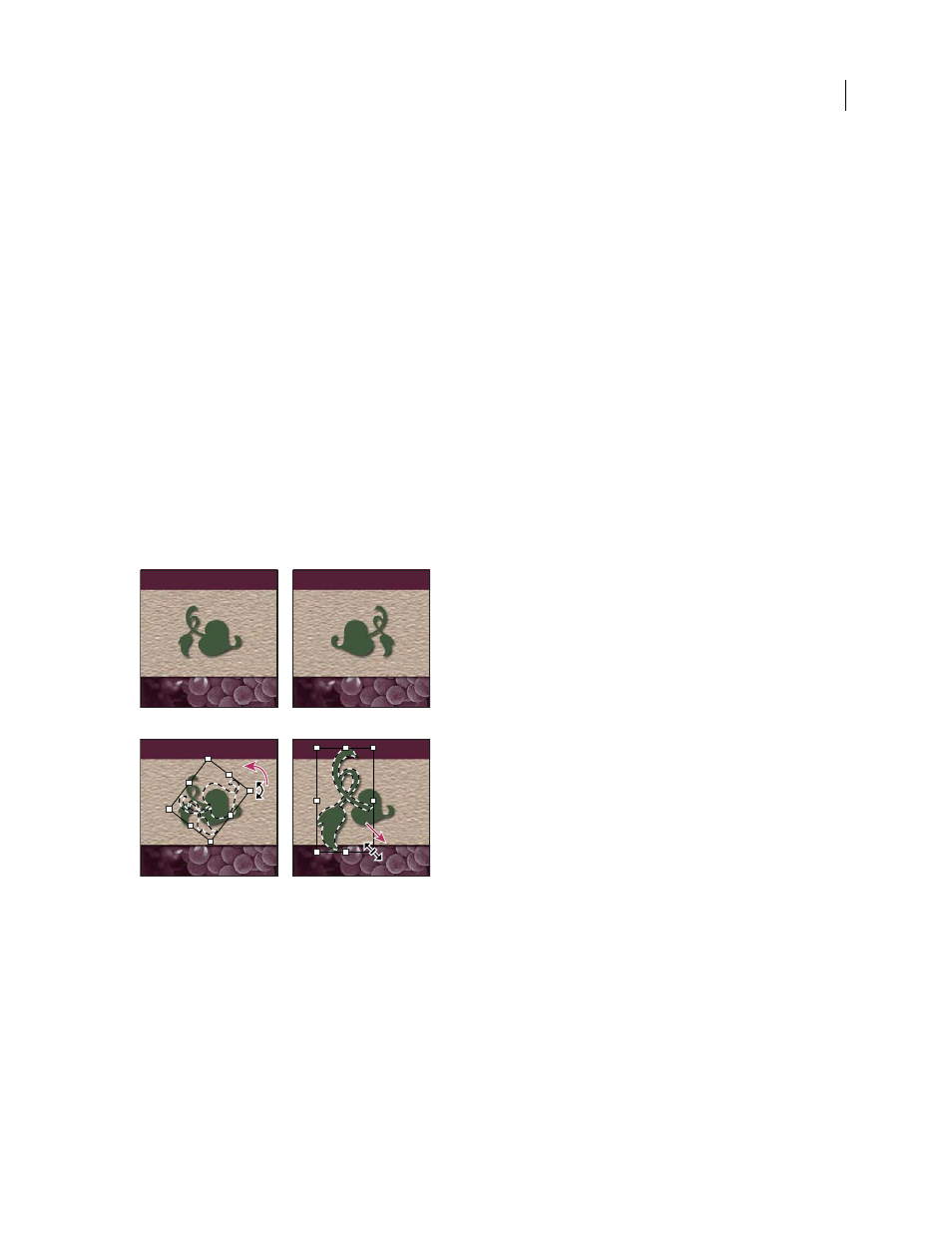Transforming objects, Apply transformations – Adobe Photoshop CS3 User Manual
Page 220

PHOTOSHOP CS3
User Guide
213
Transforming objects
Apply transformations
Transforming scales, rotates, skews, stretches, or warps an image. You can apply transformations to a selection,
an entire layer, multiple layers, or a layer mask. You can also apply transformations to a path, a vector shape, a vector
mask, a selection border, or an alpha channel. Transforming affects image quality when you manipulate the pixels.
To apply non-destructive transformations to raster images, use Smart Objects. (See “About Smart Objects” on
page 309.) Transforming a vector shape or path is always non-destructive because you’re only changing the mathe-
matical calculations producing the object.
To make a transformation, first select an item to transform and then choose a transformation command. If necessary,
adjust the reference point before manipulating the transformation. You can perform several manipulations in
succession before applying the cumulative transformation. For example, you can choose Scale and drag a handle to
scale, and then choose Distort and drag a handle to distort. Then press Enter or Return to apply both transforma-
tions.
Photoshop uses the interpolation method selected in the General area of the Preferences dialog box to calculate the
color values of pixels that are added or deleted during transformations. This interpolation setting directly affects the
speed and quality of the transformation. Bicubic interpolation, the default, is slowest but yields the best results.
Note: You can also warp and distort raster images using the Liquify filter.
Transforming an image
A. Original image B. Layer flipped C. Selection border rotated D. Part of object scaled
Transform submenu commands
Scale
Enlarges or reduces an item relative to its reference point, the fixed point around which transformations are
performed. You can scale horizontally, vertically, or both horizontally and vertically.
Rotate
Turns an item around a reference point. By default, this point is at the center of the object; however, you can
move it to another location.
Skew
Slants an item vertically and horizontally.
A
B
C
D
